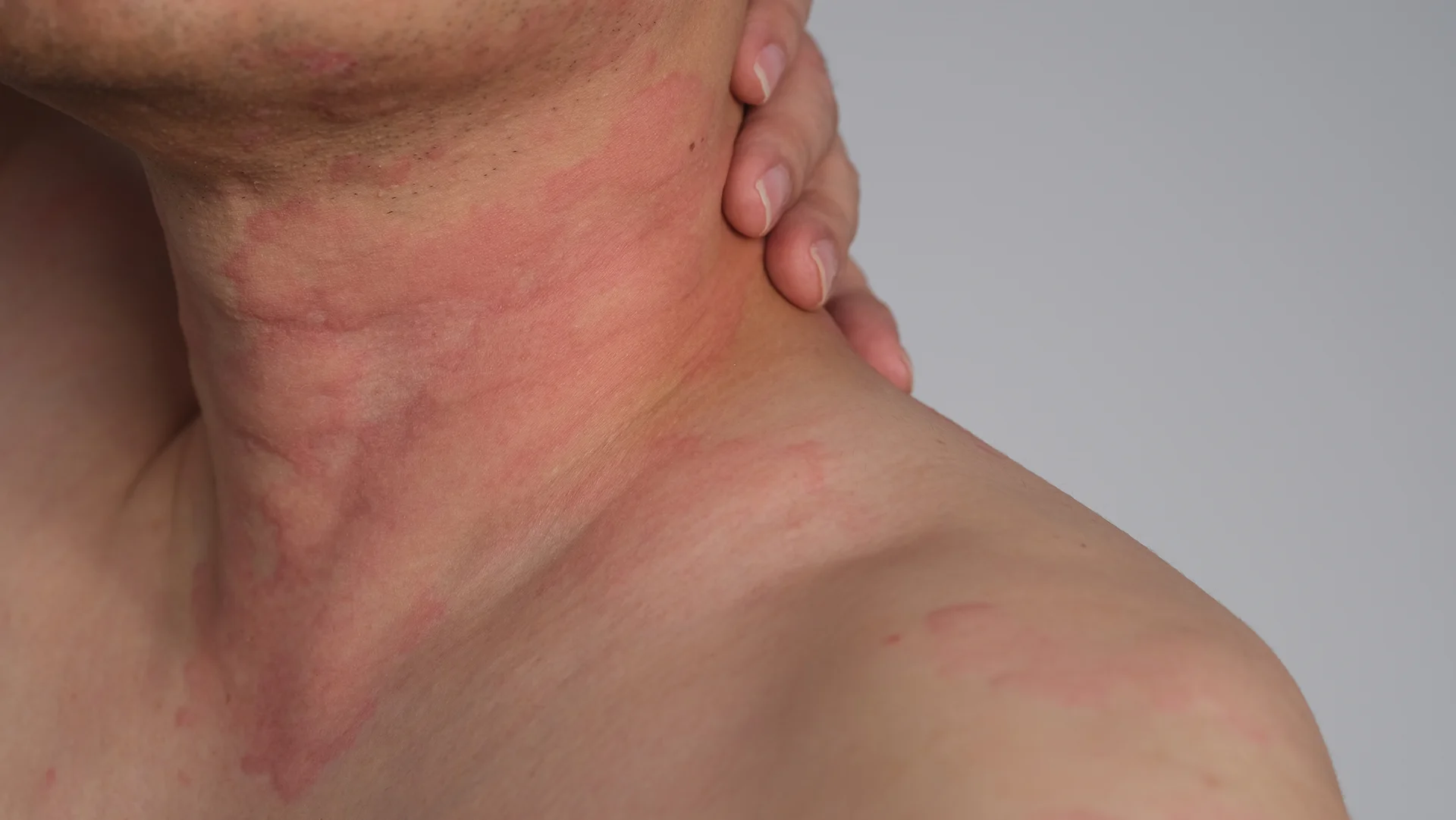That Buzzing, Burning Feeling – Getting to the Bottom of Histamine Intolerance
Do you ever feel like your body is overreacting to seemingly harmless foods or environments? Do you experience symptoms like hives, headaches, digestive issues, or throat tightness without a clear cause? If so, you may be dealing with a case of histamine intolerance.
Histamine intolerance is a complex condition that occurs when too much histamine accumulates in the body. But what causes this histamine buildup and why do some people react more than others? Keep reading to unravel the science and get to the root of histamine intolerance.
What is Histamine and What Does it Do?
Histamine is a biochemical produced naturally in the body that plays several key roles. It is synthesized from the amino acid histidine by immune cells like basophils and mast cells.
When an allergen or pathogen is detected, these cells quickly release histamine as part of the immune response. This histamine then binds to receptors on nearby cells, triggering effects like:
- Increasing blood flow to tissues
- Raising blood pressure
- Stimulating mucus production
- Causing smooth muscle contractions in airways and intestines
In essence, histamine creates an inflammatory reaction meant to deal with threats and “foreign invaders”. This makes it a vital part of immune defense.
However, problems arise when there is too much histamine flooding the system. Excess histamine firing on receptors all over the body can lead to widespread symptoms and health issues.
Causes and Mechanisms Behind Histamine Intolerance
So what leads to histamine intolerance? There are four primary causes:
Excess Histamine Production
Some conditions prompt immune cells like mast cells to produce higher-than-normal levels of histamine. For example, allergies trigger increased IgE antibodies, which activate mast cells to release more histamine during reactions.
Certain gut infections and autoimmune diseases also rev up histamine-releasing cells. The resulting overflow of histamine builds up faster than the body can metabolize it.
Impaired Histamine Breakdown
Under normal conditions, an enzyme called diamine oxidase (DAO) breaks down histamine in the digestive tract. This enzyme helps clear excess histamine from food and keep systemic levels in check.
However, some people have genetically low DAO activity. Others develop impaired DAO function from gut inflammation, enzyme-blocking foods, or diseases affecting DAO production.
With inadequate DAO, histamine is not properly metabolized in the gut. This allows it to enter circulation and wreak havoc through the bloodstream.
Increased Mast Cell Activation
Mast cells are some of the main producers of histamine in the body. When mast cells are unstable or easily triggered, they release higher amounts of histamine.
Conditions like mast cell activation syndrome (MCAS), allergies, and autoimmune diseases make mast cells hypersensitive and prone to degranulating histamine.
Medications and hormones can also stimulate mast cells. The spike in circulating histamine from frequent or easy mast cell activation may overwhelm the body’s clearance capacity.
Blocking of DAO Enzyme
Certain foods, medications, chemicals, and health conditions can inhibit DAO enzyme activity. This blocking effect means any histamine that is already in the gut cannot be properly broken down.
Substances implicated in DAO blocking include antibiotics, anti-inflammatories like ibuprofen, alcohol, black tea, and industrial chemicals. Impaired DAO function allows histamine levels to escalate.
Histamine intolerance can arise from one or a combination of:
- Too much histamine release
- Inadequate histamine breakdown
- Excessive mast cell triggering
This imbalance allows histamine to build up faster than it can be cleared, resulting in a histamine overload.
Adverse Effects of Histamine Intolerance

What happens when histamine is elevated throughout the body? Let’s examine some of the top symptoms and health issues it can cause:
| System | Effects |
| Cardiovascular | Excess histamine dilates blood vessels and lowers blood pressure. People with histamine intolerance often experience dizziness, arrhythmias, palpitations, and syncope. Flushing, headaches, and migraine can also occur as histamine dilates cerebral blood vessels. |
| Respiratory | By stimulating mucus secretion and constricting bronchial muscles, histamine triggers respiratory symptoms like cough, sneezing, congestion, and shortness of breath. Asthma attacks can also be induced by the bronchoconstriction caused by high histamine levels. |
| Gastrointestinal | The gut contains a high concentration of histamine receptors. When histamine levels are too high, it can cause nausea, vomiting, diarrhea, cramping, bloating, and other digestive complaints. By increasing gastric acid secretions it may also lead to reflux and heartburn. |
| Dermatological | Binding to skin receptors, histamine triggers vasodilation, hives, itching, flushing, and other inflammatory responses. Many skin conditions like eczema, pruritis, and urticaria are driven or worsened by histamine effects on the skin. |
| Nervous System | Histamine activates areas of the brain that control nausea and vomiting. But at excessive levels, it also constricts brain blood vessels, potentially causing severe migraines, dizziness, anxiety, brain fog, vertigo, and sedation. |
Histamine intolerance can impact a wide variety of systems and generate an array of possible symptoms. It’s easy to see why it’s often misdiagnosed or confused with other conditions.
The Role of Mast Cells in Histamine Release
What are Mast Cells?
Mast cells, essential components of our immune system, are a kind of white blood cell primarily found at boundaries between tissues and the external environment.
This includes regions like our gut and lungs’ mucosal surfaces, around blood vessels, and in the skin. Their chief role? To participate actively in inflammatory responses. When the body detects threats like allergens or pathogens, these cells spring into action.
How and Why Do Mast Cells Release Histamine?
Histamine acts as the body’s early warning system. Think of it as an alarm that sounds when invaders are detected.
Released by mast cells, histamine’s primary job is to fight off these unwanted guests. Whether it’s making you sneeze to eject an allergen or causing itching to alert you to an issue, histamine is doing its best to protect you.
But how does this work? It’s all about the receptors. Histamine communicates by binding to its receptors, of which there are four types: H1, H2, H3, and H4. Medications like antihistamines block this communication, preventing histamine from sending its signals.
Now, the triggers. Mast cells don’t release histamine just because they feel like it. Specific stimuli prompt this release:
- Allergens: Some people’s bodies identify certain substances as threats, even when they aren’t harmful to most.
- Pathogens: These are the genuine threats – harmful bacteria and viruses.
- Physical trauma: Injuries like cuts or burns can cause mast cells to release histamine to promote healing.
Conditions Amplifying Histamine Release
Certain conditions can make mast cells a little overzealous in their histamine release:
- Mast Cell Activation Syndrome (MCAS): Here, the body’s mast cells release histamine and other substances too frequently, often without a clear trigger.
- Mastocytosis: A step further from MCAS, this is when the body overproduces mast cells in one or multiple organs, leading to excessive histamine release.
- Infections: Certain parasites can trigger a histamine release, thanks to IgE signaling.
- Autoimmune & Inflammatory Disorders: Conditions like rheumatoid arthritis can lead to increased histamine release. In these cases, mast cells play a role in bringing more inflammatory cells to the site.
- Allergies: Perhaps the most common culprits behind histamine release, allergies occur when the body mistakenly identifies a substance as harmful.
- Anaphylaxis: A severe and rapid allergic reaction, anaphylaxis is a result of a massive, sudden histamine release. It’s urgent and can be life-threatening.
Testing and Diagnosis of Histamine Intolerance
With its broad range of symptoms, how do doctors test for and diagnose histamine intolerance? Here are some of the main methods:
Blood Tests
Plasma histamine levels can be measured through venous blood draws. However, because histamine is rapidly metabolized, blood histamine alone may not give an accurate picture.
Blood can also be tested for DAO activity. Low serum DAO indicates impaired breakdown that could permit elevated histamine.
Urine Tests
Like blood, urine can be measured for histamine levels. However, some physicians prefer urine over blood for assessing histamine as it provides a wider window for detection in the urine.
A DAO urine test can directly quantify the enzyme activity in a 24-hour urine sample. This helps identify DAO deficiencies.
Food Intolerance Testing
Specialized IgG food sensitivity tests detect antibodies against foods. This can identify possible dietary triggers of histamine reactions so they can be eliminated.
Oral Histamine Challenge
In this diagnostic test for histamine intolerance, patients are given gradually increasing oral doses of histamine. Levels of histamine that cause reactions indicate an inability to properly metabolize the administered histamine.
Treatment and Management of Histamine Intolerance
The key goals in treating histamine intolerance are to:
1. Reduce incoming and circulating histamine
2. Improve breakdown of excess histamine
3. Stabilize mast cells to prevent unnecessary histamine release
This involves a multi-pronged approach:
| Treatment/Management | Description/Details |
| Low Histamine Diet | Limit intake of histamine-rich foods such as: Aged cheeses, Fermented foods, Smoked meats, Citrus fruits, Tomatoes, Nuts, Chocolate, Vinegar, Processed meats, Alcohol. |
| Antihistamines | Over-the-counter options like loratadine block histamine effects. Stronger H1 and H2 blockers may be prescribed for more significant relief. |
| DAO Enzyme Supplements | Taking external diamine oxidase can assist with degrading histamine mainly in the digestive system. It’s ideal to take these with meals to enhance food histamine breakdown. |
| Mast Cell Stabilizers | Medications such as cromolyn stabilize mast cells to prevent over-release of histamine. Natural options like quercetin also stabilize mast cells. |
| Vitamins and Minerals | Supportive supplements like vitamin C, B6, and zinc aid histamine metabolism enzymes. Incorporating probiotics can also be beneficial as certain strains degrade histamine. |
| DAO-Boosting Foods | Some foods, like green tea, stinging nettle, and gingko biloba, may enhance internal DAO activity. However, research in this area is ongoing. |
| Identify Triggers | Maintain a food and symptom diary. Recognize the correlation between high-histamine foods and symptom onset to identify and avoid personal triggers. |
Treat Underlying Causes
If infections, gut permeability, allergies, or autoimmunity are compromising DAO activity, these root causes must be addressed. Anti-inflammatory treatments, immune modulators, or antimicrobials may be warranted.
With diligence to avoid triggers, strategic supplementation, and treating underlying factors, histamine intolerance can be successfully managed. But support for proper histamine metabolism must be tailored to the individual.
Discovering Your Solution with DAO-Hist

By working closely with our team during these consultations, we help you understand the potential benefits of our product in managing dietary histamine levels, enhancing DAO function, and restoring a healthy histamine balance.
Break free from the discomfort of histamine overload and rediscover your well-being. Reach out to SeeBeyond Shop today, and let us guide you towards a solution tailored for your histamine intolerance journey.
